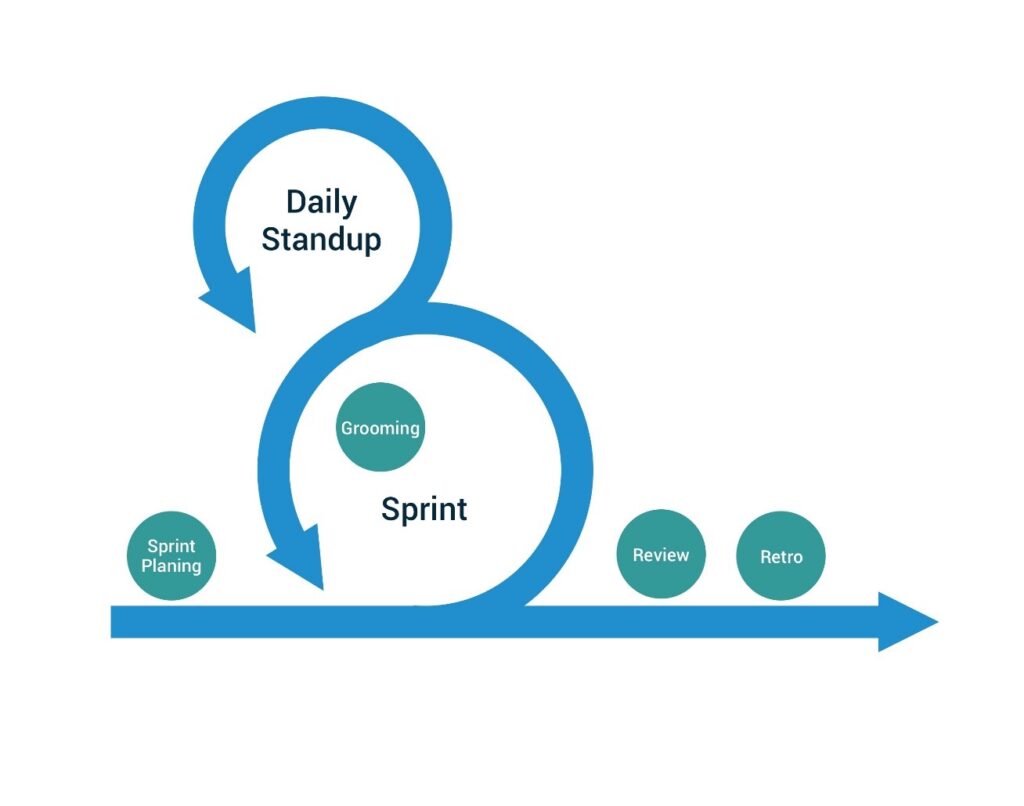Today almost every company uses or tries some of Agile best practices for project and task management. Indeed, the words “Agile”, “Kanban”, “Scrum”, “Lean”, “SAFe” and others are familiar to everybody, yet there’s a problem. Many people confuse these words and completely mix up popular frameworks. So we’d like to once and for all make it clear and show the difference between Agile and Scrum.
What is Agile?
When you hear this word, at once to your mind comes another one – methodology. So, Agile is a system of development principles based on refusing from long-term planning in favor of dynamic task creation and making changes as soon as it’s necessary, when the market demands it.
The Agile approach first appeared in the IT-sphere, and it’s natural that software developers were first to form four core values and documented them into Agile Manifesto:
- People and their cooperation are more important than working processes and tools.
- Product that works is more important than complicated documentation.
- Collaboration with customers is more important than contract negotiation.
- Being open to changes is more important than following the plan.
As time passes, Agile values enter not only development teams but also other teams in business environments.

Based on the core values, frameworks appear – ways of how to implement Agile principles into the working process. The most popular ones are Scrum, Kanban, and Lean.
What is Scrum?
Scrum is one of Agile subsets. It’s a strict framework in which all the work is divided into equal sprints, and people in the team take roles.
Sprints are short iterations that last for 2-3 weeks. Before the sprint starts, the team should form a list of features for the iteration to complete. When the sprint is over, all completed features should be uploaded to production. If the team doesn’t manage to complete some of them, then they are transferred to the next sprint.

The main idea of this working approach is to decompose all the work and give priority to the tasks. By this, the team reaches a fast launch of the product.
In Scrum, it’s all about communication and collaboration in the team. Before the sprint starts, all teammates discuss the entire sprint backlog and ask questions, involving to the discussion UX designers, product managers, or business analysts. So they all evaluate possible problems together and make all possible to find a solution.
Scrum metrics: Story points and Velocity
All tasks are evaluated in Story points, or hours. Using them, the team knows the precise amount of time needed to complete the task. Velocity measures the team productivity for each sprint.
Scrum is ideal for large projects with strict deadlines, as all the work will be divided into small parts that ends in 2-3 weeks, so it’s easy to predict where the team will be in a month or two.
Main roles: Scrum master, Product Owner, Team
Scrum master is the keeper of the process. His main task is to ensure that the development process flows smoothly and to remove any blocks impacting team productivity. Scrum master also organizes and manages all Scrum meetings.
Product owner is a keeper of requirements. His main task is to provide the team with a single source of truth. He works closely with the team in order to reveal all user and technical requirements and to document and prioritize them. Product owner maintains the product backlog, keeping it up to date.
Team is a self-organized group of people who are responsible for developing and testing the product. All team members decide by themselves how to divide big parts of work into smaller tasks and who is responsible for every task throughout the sprint. The team shouldn’t be big, and the team size is recommended to be from five to nine people. If the team is bigger, it’s difficult to communicate with everyone, and if the team is smaller, the productivity may be low and fragile.
Difference between Agile and Scrum
The main difference between them is that Agile is like the family of little frameworks or a mindset (depending on the context), and Scrum is a part of it and the way of Agile product development. We can compare Scrum to another branch on the Agile tree, such as Kanban, but it’s not correct to put Agile vs Scrum.












